

Goa, located on the western coast of India, is the country's smallest state by area but one of the most popular tourist destinations. Known for its pristine beaches, vibrant nightlife, and unique blend of Indian and Portuguese cultures, Goa offers a distinct experience unlike any other state. From the historic churches of Old Goa to the lively shacks of North Goa, the state presents a perfect mix of relaxation, adventure, and cultural exploration.
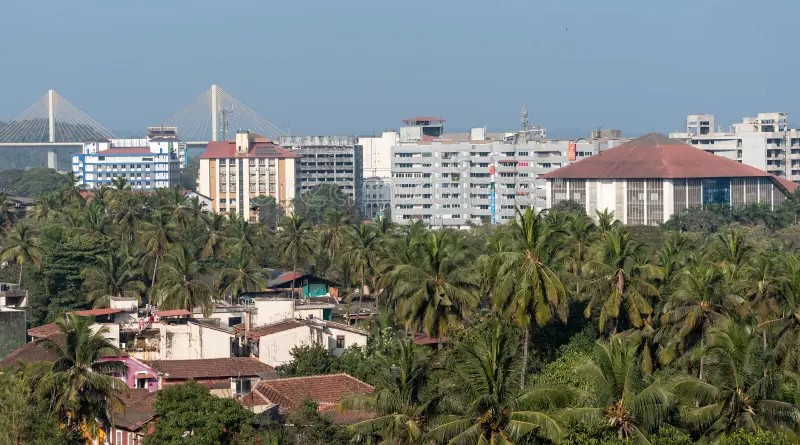
Goa stands unique in Indian history as the only state with a significant Portuguese colonial past that lasted over 450 years. This long period of Portuguese rule has left an indelible mark on Goan culture, architecture, cuisine, and way of life, creating a distinct identity that sets it apart from other Indian states.
The Portuguese first arrived in Goa in 1510 under the command of Afonso de Albuquerque, who conquered the area from the Bijapur Sultanate. For the next four and a half centuries, Goa served as the capital of Portuguese India, becoming a center for trade, missionary activities, and cultural exchange between East and West.
This colonial period significantly influenced Goan society. The Portuguese introduced Christianity to the region, and today, Goa has the highest percentage of Christians among Indian states. They also brought with them architectural styles that blended European and Indian elements, resulting in the unique Indo-Portuguese buildings seen throughout the state, particularly in Old Goa.
Unlike many other parts of India that experienced British colonial rule, Goa's Portuguese connection created a distinct cultural synthesis. This is evident in the state's festivals, which include both Hindu and Christian celebrations, and its cuisine, which features unique dishes like vindaloo, sorpotel, and bebinca that combine local ingredients with Portuguese cooking techniques.
Goa's liberation from Portuguese rule came on December 19, 1961, when Indian forces conducted Operation Vijay to integrate the territory into the Indian Union. This event marked the end of European colonialism in India and began Goa's journey as an integral part of the country.
Today, Goa takes pride in this unique heritage. The churches and convents of Old Goa are UNESCO World Heritage Sites, attracting visitors from around the world. The state's relaxed lifestyle, often summed up by the phrase "susegad" (meaning contented or laid-back), reflects this blended cultural history.
Goa's Portuguese legacy is not just historical; it's a living tradition that continues to shape the state's identity. From the architecture of its homes to the rhythm of its music and the flavors of its food, this heritage makes Goa a fascinating example of cultural synthesis and resilience.
Goa is known for its rich cultural heritage, which is reflected in its linguistic diversity. The state's language landscape showcases its unique history as a meeting point of Indian and Portuguese cultures.
Konkani is the official language of Goa and is spoken by the majority of the population. It belongs to the Southern Indo-Aryan language group and has a rich literary tradition dating back centuries. Konkani is written in multiple scripts, including Devanagari, Roman, Kannada, and Malayalam, reflecting the diverse influences on the language.
The languages of Goa reflect its unique position as a cultural crossroads. While Konkani remains the heart of Goan identity, the presence of Marathi, Portuguese loanwords, English, and Hindi creates a rich linguistic tapestry that mirrors Goa's history as a meeting point of Eastern and Western cultures.
Goa's festivals reflect its unique blend of Hindu and Christian traditions, creating a cultural calendar that is vibrant, colorful, and inclusive. From religious processions to harvest celebrations, Goan festivals showcase the state's joyful spirit and cultural diversity.
The Goa Carnival is the most famous and eagerly awaited festival in the state, known for its vibrant parades, colorful costumes, music, and dance. Introduced by the Portuguese, this pre-Lenten festival has become an integral part of Goan culture and attracts tourists from around the world.
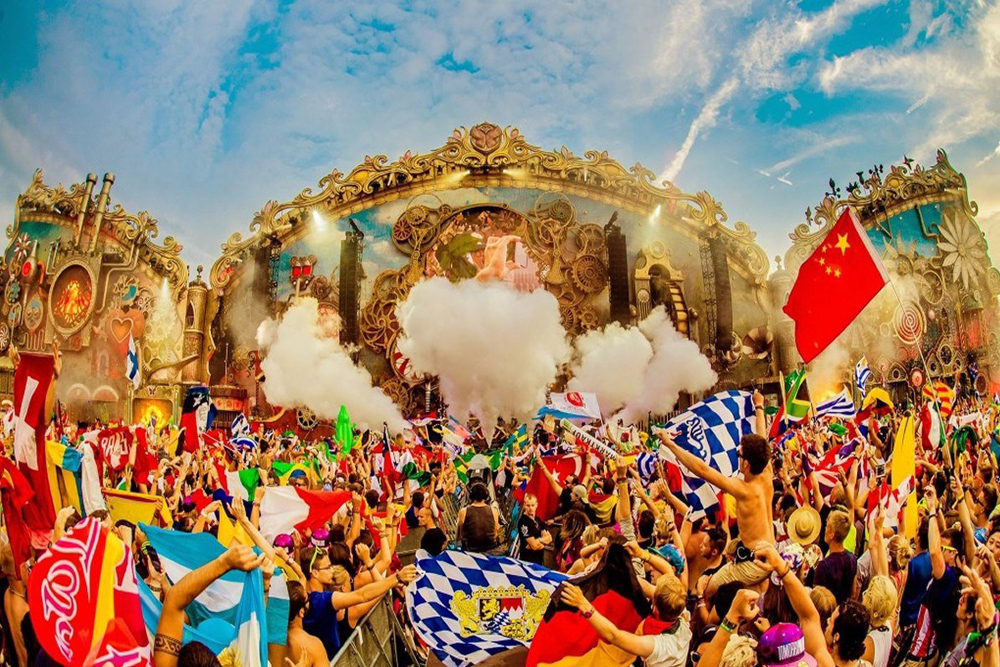
The Goa Carnival is more than just a festival; it is a celebration of life that transcends religious and cultural boundaries. With its vibrant colors, infectious music, and joyful spirit, the Carnival perfectly embodies Goa's unique identity as a place where different cultures coexist harmoniously.
The Feast of St. Francis Xavier is one of the most important religious events in Goa, attracting thousands of pilgrims from around the world. Held annually at the Basilica of Bom Jesus in Old Goa, this feast honors the patron saint of Goa, whose preserved body is enshrined in the basilica.
St. Francis Xavier, a Jesuit missionary, played a significant role in spreading Christianity in Asia during the 16th century. After his death, his body was brought to Goa, where it has been preserved for centuries. The feast, celebrated on December 3rd, includes novenas, masses, and a grand procession that showcases the deep faith of Goan Christians.
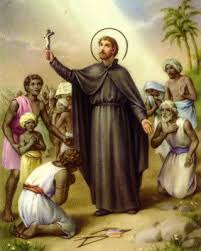
The Feast of St. Francis Xavier is a testament to Goa's deep-rooted Christian traditions and its significance as a center of Christianity in Asia. The devotion displayed during this feast reflects the enduring faith of the Goan people and their connection to their religious heritage.
Shigmo is Goa's traditional spring festival celebrated by the Hindu community. Similar to Holi celebrated in other parts of India, Shigmo is marked by colorful processions, folk dances, and music. However, it has distinct Goan characteristics that set it apart.
Shigmo represents the rich Hindu heritage of Goa, showcasing traditional art forms and community spirit. As a festival that predates Portuguese influence, it connects modern Goans to their ancient cultural roots while adapting to contemporary times.
The festivals of Goa showcase its unique cultural synthesis, where Hindu and Christian traditions coexist and often influence each other. This harmonious blend of celebrations reflects the spirit of Goa - joyful, inclusive, and deeply rooted in both Indian and Portuguese heritage.

Goa, India's smallest state by area, is one of the country's most popular tourist destinations. Known for its pristine beaches, vibrant nightlife, Portuguese-influenced architecture, and rich cultural heritage, Goa offers a unique blend of Indian and Western cultures. Each city in Goa has its own distinct character, contributing to the state's reputation as the "Pearl of the Orient."
Panaji, also known as Panjim, is the capital city of Goa. Located on the banks of the Mandovi River, it serves as the administrative and cultural hub of the state. Unlike other Indian state capitals, Panaji maintains a relaxed, small-town charm while offering modern amenities and attractions.
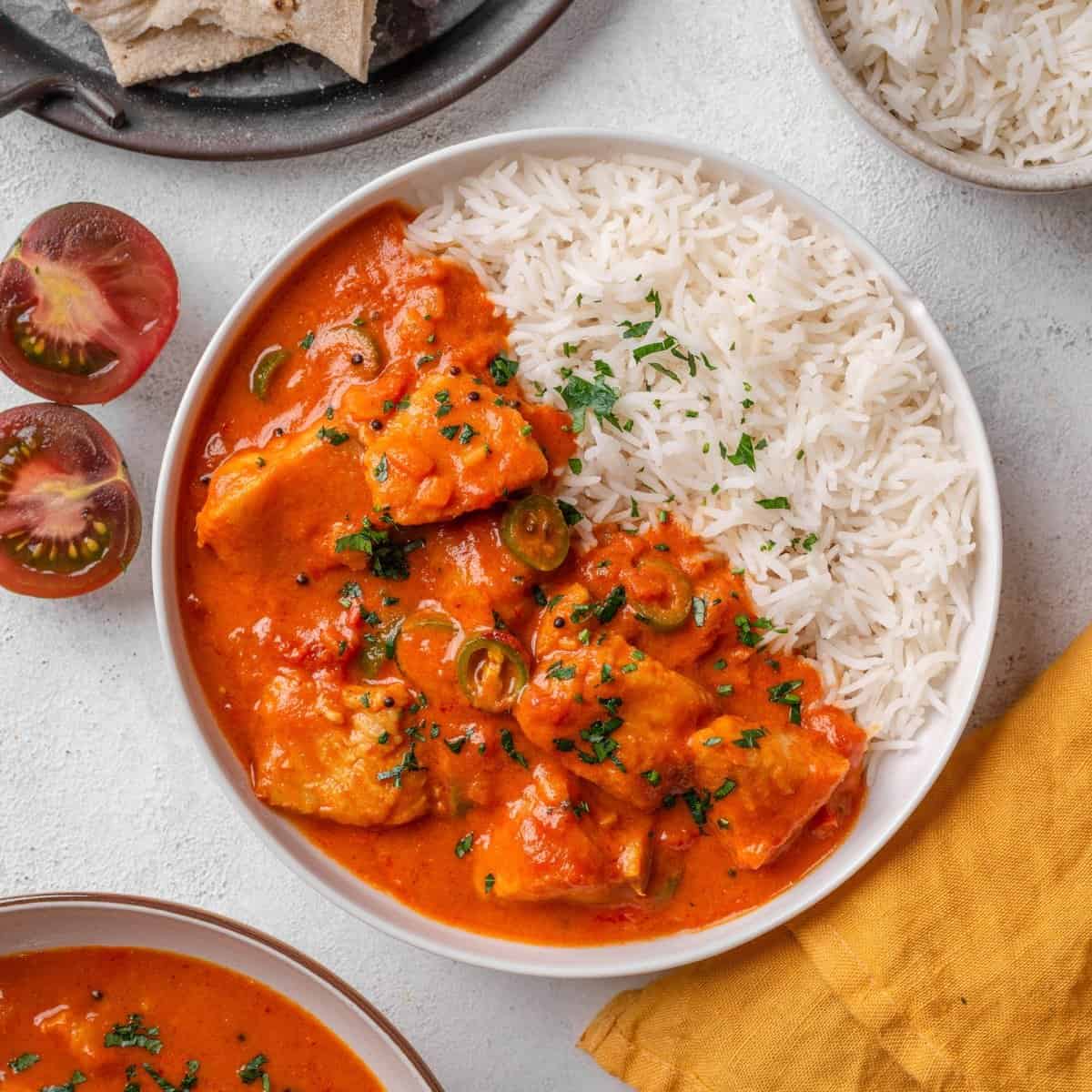
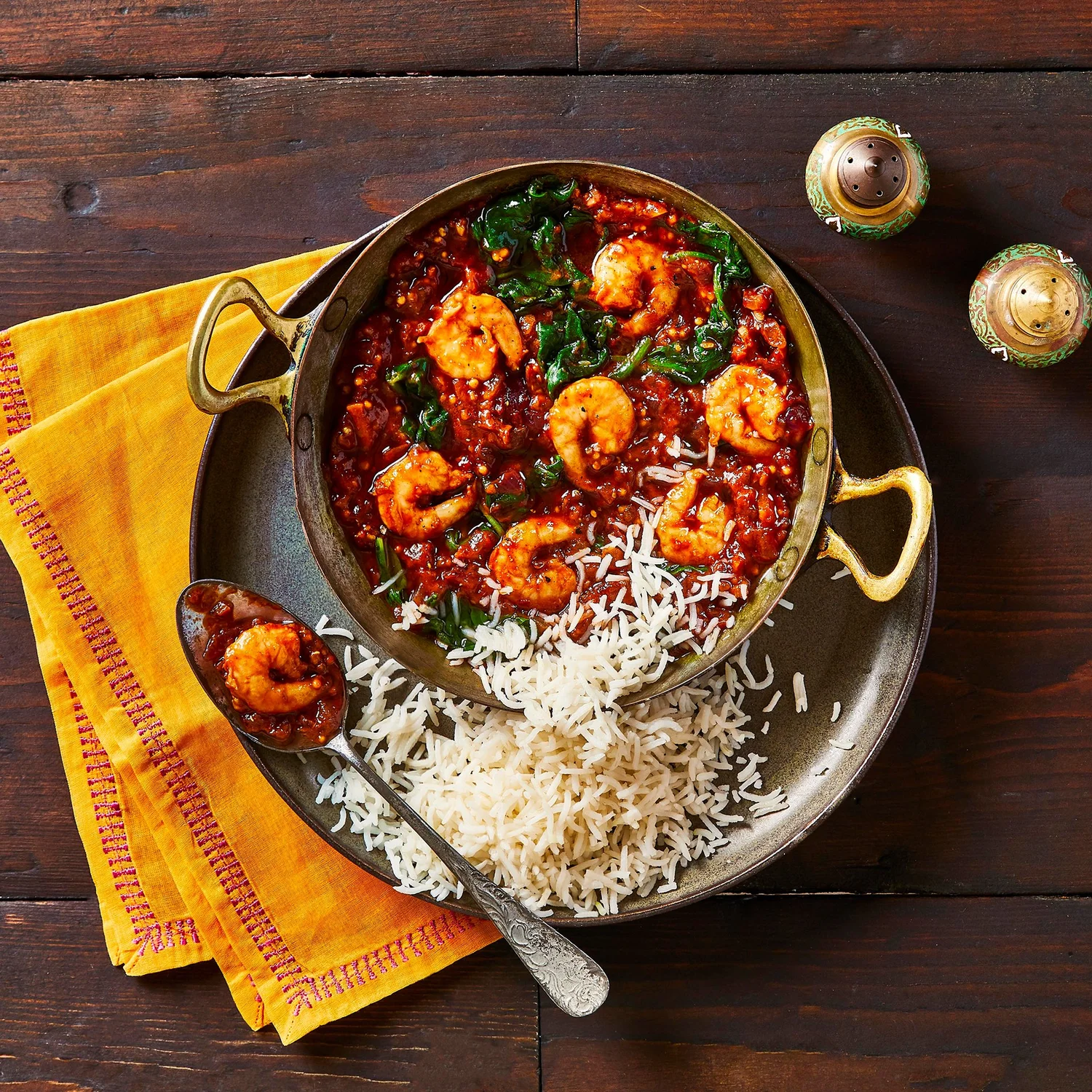
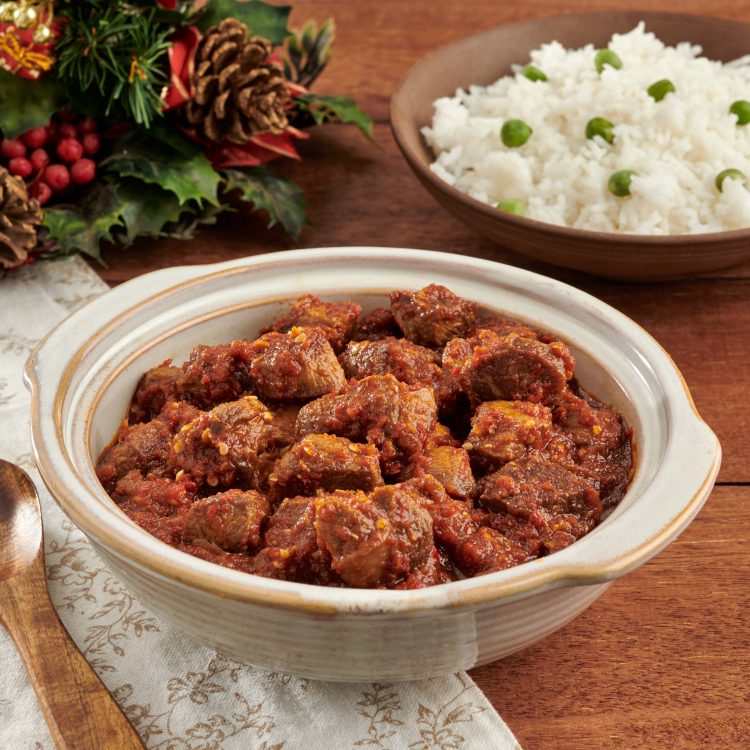
The Church of Our Lady of the Immaculate Conception is one of the most recognizable landmarks in Goa. Located at the top of a grand staircase in the center of Panaji, this pristine white church was built in 1541 and later rebuilt in 1619. It served as the first stop for sailors from Portugal who would give thanks for a safe passage after arriving in Goa.
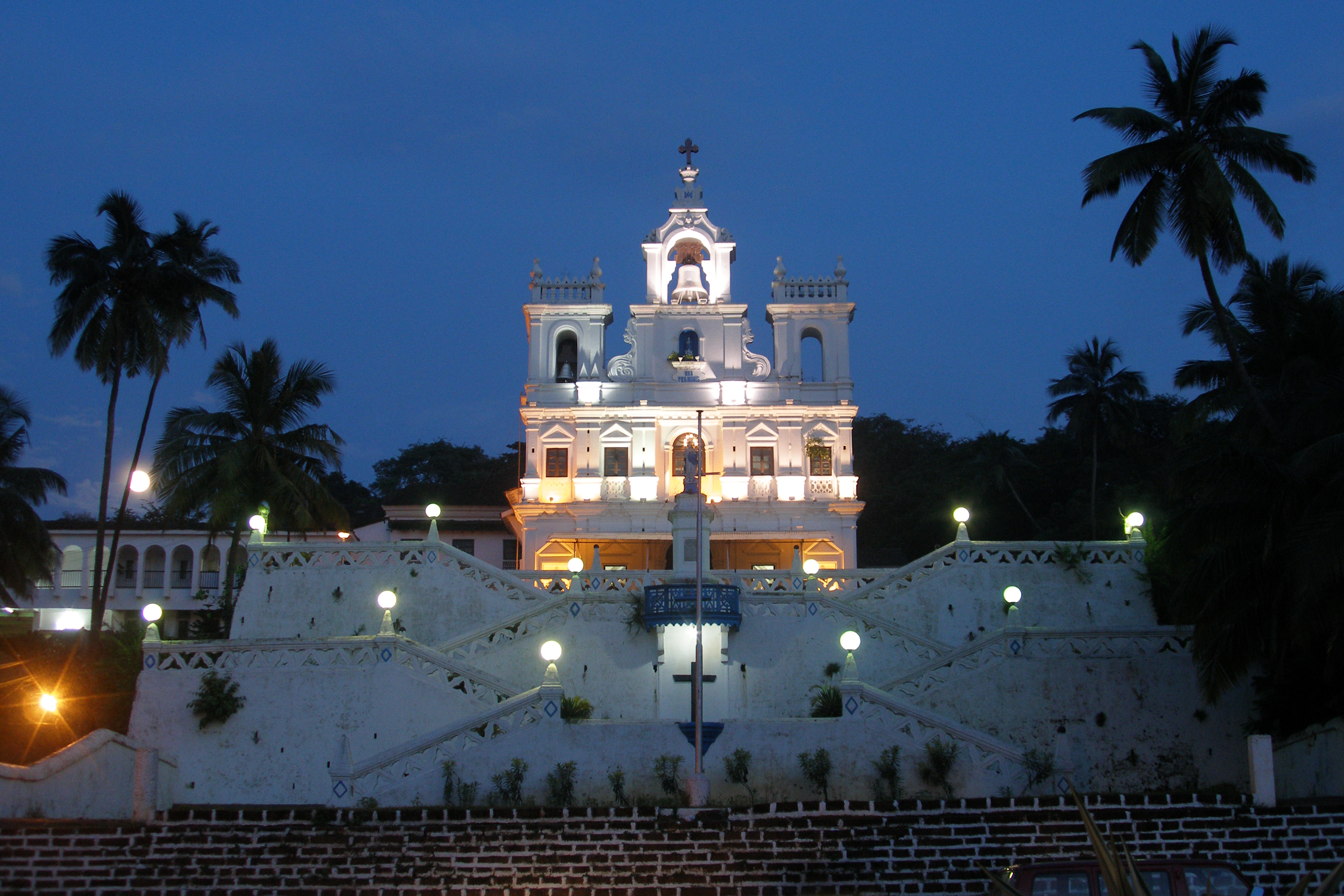
The church features a Baroque architectural style with a magnificent bell tower that is among the largest in Goa. The main altar is dedicated to Mary, the mother of Jesus, and the church interior is adorned with beautiful decorations and religious artifacts. The church is particularly famous for its annual feast celebration on December 8th, which attracts devotees from across Goa.
Today, the Church of Our Lady of the Immaculate Conception is not only a place of worship but also a major tourist attraction. Its picturesque setting and historical significance make it a must-visit destination in Panaji, representing the rich Portuguese heritage of Goa.
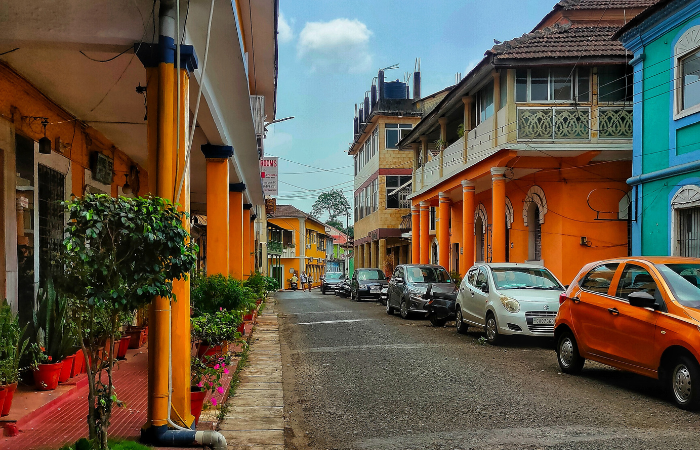
Fontainhas is Goa's Latin Quarter, a heritage precinct in Panaji that preserves the architectural and cultural legacy of Portuguese rule. Named after the Fountain of Phoenix, this area is characterized by its narrow, winding streets lined with brightly colored houses bearing distinct Portuguese influences.
Declared a UNESCO Heritage Zone, Fontainhas offers a glimpse into Goa's colonial past. The houses feature overhanging balconies, red-tiled roofs, and ornate windows, painted in vibrant shades of yellow, blue, green, and red. The area also houses several art galleries, boutique hotels, and restaurants that add to its charm.
Walking through Fontainhas feels like stepping back in time. The quarter hosts the Fontainhas Festival of Arts annually, celebrating Goan culture through music, dance, and art exhibitions. It's a living museum that continues to be inhabited by local families, preserving traditions while adapting to modern times.
In conclusion, Fontainhas is more than just a historic neighborhood—it's the soul of Panaji, representing the unique cultural fusion that defines Goa. Its preservation ensures that future generations can experience the architectural and cultural heritage of Portuguese-era Goa.
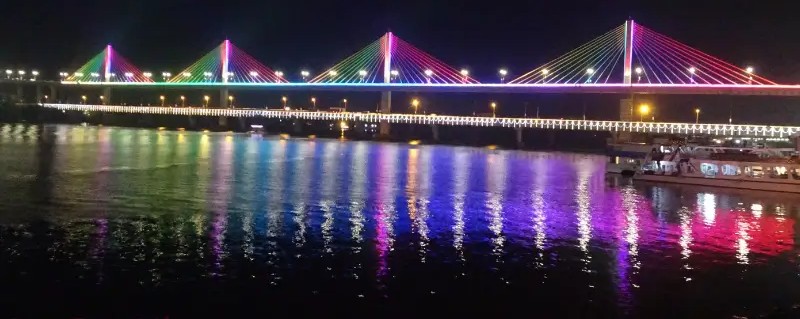
The Mandovi Riverfront is the lifeline of Panaji, offering stunning views and recreational activities for both locals and tourists. The river flows through the heart of the city, with a well-developed promenade along its banks that serves as a popular gathering spot.
One of the main attractions on the Mandovi River is the sunset cruise. These boat trips offer panoramic views of Panaji's skyline, including the Adil Shah Palace and the Church of Our Lady of the Immaculate Conception. Many cruises feature live music, dance performances, and Goan cultural shows, providing entertainment as visitors enjoy the cool river breeze.
The riverfront is also home to several casinos on floating vessels, which have become a significant part of Goa's tourism industry. These casinos offer gaming, dining, and entertainment options, attracting visitors looking for nightlife experiences.
During the day, the Mandovi Riverfront is a peaceful place for walks, with locals and tourists enjoying the view of fishing boats, ferries, and occasional dolphins. The area comes alive in the evenings with food stalls, street performers, and the illuminated bridges spanning the river.
In conclusion, the Mandovi Riverfront is not just a geographical feature but the social and recreational center of Panaji. It beautifully combines natural beauty with cultural entertainment, making it an essential experience for anyone visiting Goa's capital.
Located on Chorao Island along the Mandovi River, the Salim Ali Bird Sanctuary is named after India's most famous ornithologist, Dr. Salim Ali. This sanctuary spans approximately 1.8 square kilometers and is comprised mainly of mangrove forests, which provide a vital ecosystem for numerous bird species and other wildlife.
The sanctuary is accessible by ferry from Ribandar, near Panaji. Visitors can explore the area through walking trails and boat rides that navigate the narrow channels between mangroves. The best time to visit is during the winter months (October to March) when migratory birds from Europe and Siberia join the resident species.
Birdwatchers can spot a variety of species including kingfishers, eagles, woodpeckers, sandpipers, and the distinctive purple heron. The sanctuary is also home to mudskippers, fiddler crabs, and crocodiles that inhabit the mangrove ecosystem. The dense mangroves serve as breeding grounds for fish and crustaceans, supporting local fisheries.
Beyond its ecological importance, the Salim Ali Bird Sanctuary offers a peaceful retreat from the city's hustle. The sounds of birds and the rustling of mangrove leaves create a serene atmosphere that contrasts with Goa's beach tourism. Educational programs and guided tours help visitors understand the significance of mangrove conservation.
In conclusion, the Salim Ali Bird Sanctuary is a vital natural habitat that showcases Goa's biodiversity beyond its beaches. It represents the state's commitment to preserving its ecological heritage while providing a unique ecotourism experience for nature lovers.
Panaji embodies the essence of Goa with its blend of Portuguese heritage and contemporary Indian life. As the state capital, it offers cultural richness, historical significance, and modern amenities while maintaining a relaxed atmosphere. From its colorful Latin Quarter to its vibrant riverfront, Panaji is a city that captures the heart of every visitor.
Vasco da Gama, commonly called Vasco, is a port city in Goa named after the famous Portuguese explorer. Located on the western tip of the Mormugao peninsula, it serves as the main commercial port for Goa and is an important industrial and transportation hub. Despite its industrial character, Vasco offers access to some of Goa's beautiful beaches and has its own unique charm.
Vasco da Gama represents the industrial and commercial side of Goa, balancing its port operations with access to natural beauty. As the gateway to Goa by air and sea, it plays a crucial role in the state's economy while offering its own attractions for visitors seeking a different perspective on Goa beyond the beaches.
Margao, also spelled Madgaon, is the second-largest city in Goa and considered the cultural capital of the state. Located in South Goa, it serves as the commercial and cultural hub of the region. Margao is known for its Portuguese-era architecture, vibrant markets, and as a transportation center connecting South Goa to other parts of the state.
Margao offers a glimpse into the authentic Goan way of life, balancing commercial activity with cultural preservation. As the cultural capital of Goa, it showcases the state's heritage through its architecture, markets, and traditions. For visitors seeking to understand Goa beyond its beaches, Margao provides an enriching experience of the state's heartland.
Mapusa is the largest town in North Goa and serves as the administrative headquarters of Bardez taluka. Known primarily for its vibrant Friday market, Mapusa is a commercial hub that attracts shoppers from across Goa and neighboring states. The town offers a mix of Goan authenticity and modern amenities, making it an important center in North Goa.
Mapusa represents the commercial heartbeat of North Goa, where traditional market culture thrives alongside modern retail. The town's vibrant atmosphere, especially on market days, offers an authentic Goan experience distinct from the beach tourism found in coastal areas. For those seeking to understand the everyday life of Goans, Mapusa provides an invaluable perspective.
Ponda, located in the interior of Goa, is known as the "Temple Town" due to its concentration of important Hindu temples. During Portuguese rule, when temple destruction was common in coastal areas, many deities were moved to Ponda for safety. Today, it remains a significant center for Hindu religion and culture in Goa, while also being an important agricultural and industrial area.
Ponda offers a different dimension of Goa, focused on religious heritage and inland attractions rather than beaches. As the Temple Town, it preserves an important aspect of Goan culture that contrasts with the state's Portuguese-influenced coastal areas. The combination of sacred sites, spice plantations, and cultural authenticity makes Ponda an essential destination for understanding Goa's diversity.
The cities of Goa each contribute uniquely to the state's character. Panaji represents the administrative and cultural heart, Vasco da Gama the industrial and port activities, Margao the commercial and traditional life, Mapusa the market culture, and Ponda the religious heritage. Together, these urban centers showcase the diversity that makes Goa much more than just a beach destination—they reveal a state with rich history, vibrant culture, and multiple economic engines that balance tourism with other sectors. From Portuguese-influenced architecture to Hindu temple complexes, from bustling markets to tranquil riverfronts, Goa's cities offer experiences that capture the essence of this unique Indian state.
Goan food is a delightful blend of Konkani, Portuguese, and other influences, creating a unique culinary tradition known for its bold flavors, generous use of spices, and seafood specialties. The cuisine reflects Goa's coastal location and its history as a Portuguese colony.
Fish curry rice is the quintessential Goan meal, eaten by locals almost daily. This simple yet flavorful dish consists of fresh fish cooked in a tangy coconut-based curry, served with steamed rice.
Fish curry rice is more than just a meal; it's a symbol of Goan identity and coastal living. Its simplicity belies the complex flavors that have evolved over centuries, making it the heart of Goan culinary tradition.
Vindaloo is perhaps the most famous Goan dish internationally, known for its fiery heat and complex flavors. This pork dish exemplifies the Portuguese influence on Goan cuisine.
Pork vindaloo is a perfect example of culinary fusion, where Portuguese techniques met Indian spices to create something uniquely Goan. Its complex flavors tell the story of Goa's colonial history and its ability to adapt foreign influences into its own distinctive culture.
Bebinca is a traditional Goan dessert that is as much a work of art as it is a culinary delight. This multi-layered pudding cake is a staple at festive occasions and represents the sweet side of Goan cuisine.
Bebinca is more than just a dessert; it's a labor of love that embodies the festive spirit of Goa. Each layer represents the care and tradition that goes into Goan cooking, making it a fitting conclusion to any Goan meal and a sweet representation of the state's cultural heritage.

A spicy chicken dish with a complex blend of roasted spices and coconut.

A tangy and spicy prawn pickle made with shrimp, vinegar, and spices.

A spicy pork dish of Portuguese origin, often served at celebrations.
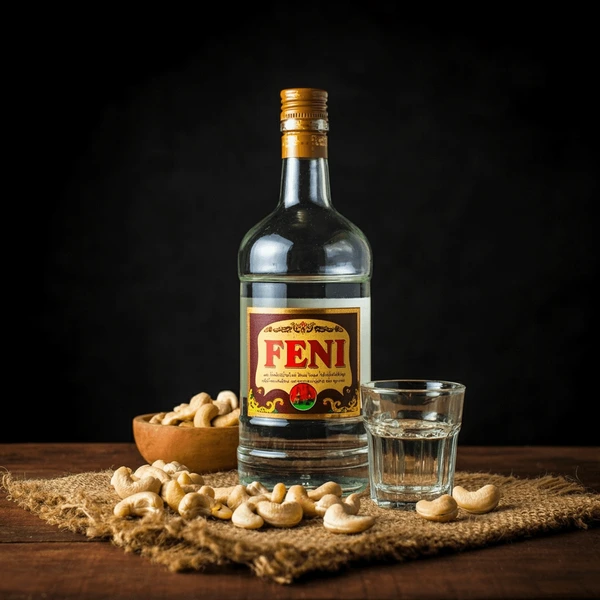
Goa's famous alcoholic beverage made from cashew apples or coconut palm.
Goan cuisine is a vibrant tapestry woven from indigenous Konkani traditions and Portuguese influences, with additional touches from other cultures that have interacted with Goa over centuries. From the daily comfort of fish curry rice to the festive indulgence of bebinca, Goan food tells the story of a people who have mastered the art of blending flavors and traditions. Each dish is not just nourishment but a celebration of Goa's unique cultural identity and its position as a meeting point of Eastern and Western culinary traditions.
Goan fashion is a vibrant reflection of its tropical climate, Portuguese colonial history, and rich cultural diversity. From traditional attire that tells stories of the past to contemporary styles influenced by tourism and global trends, Goan clothing represents a unique blend of comfort, elegance, and cultural identity. The fashion scene in Goa beautifully balances tradition with modernity, creating a distinctive style that is both functional and aesthetically pleasing.
Did you know? Goan fashion is heavily influenced by its tropical climate, with lightweight fabrics and bright colors dominating traditional and modern attire alike.
Traditional Goan men's attire reflects the state's Portuguese colonial heritage combined with local practicality for the tropical climate. From formal occasions to everyday wear, these garments showcase a unique cultural fusion that has evolved over centuries.
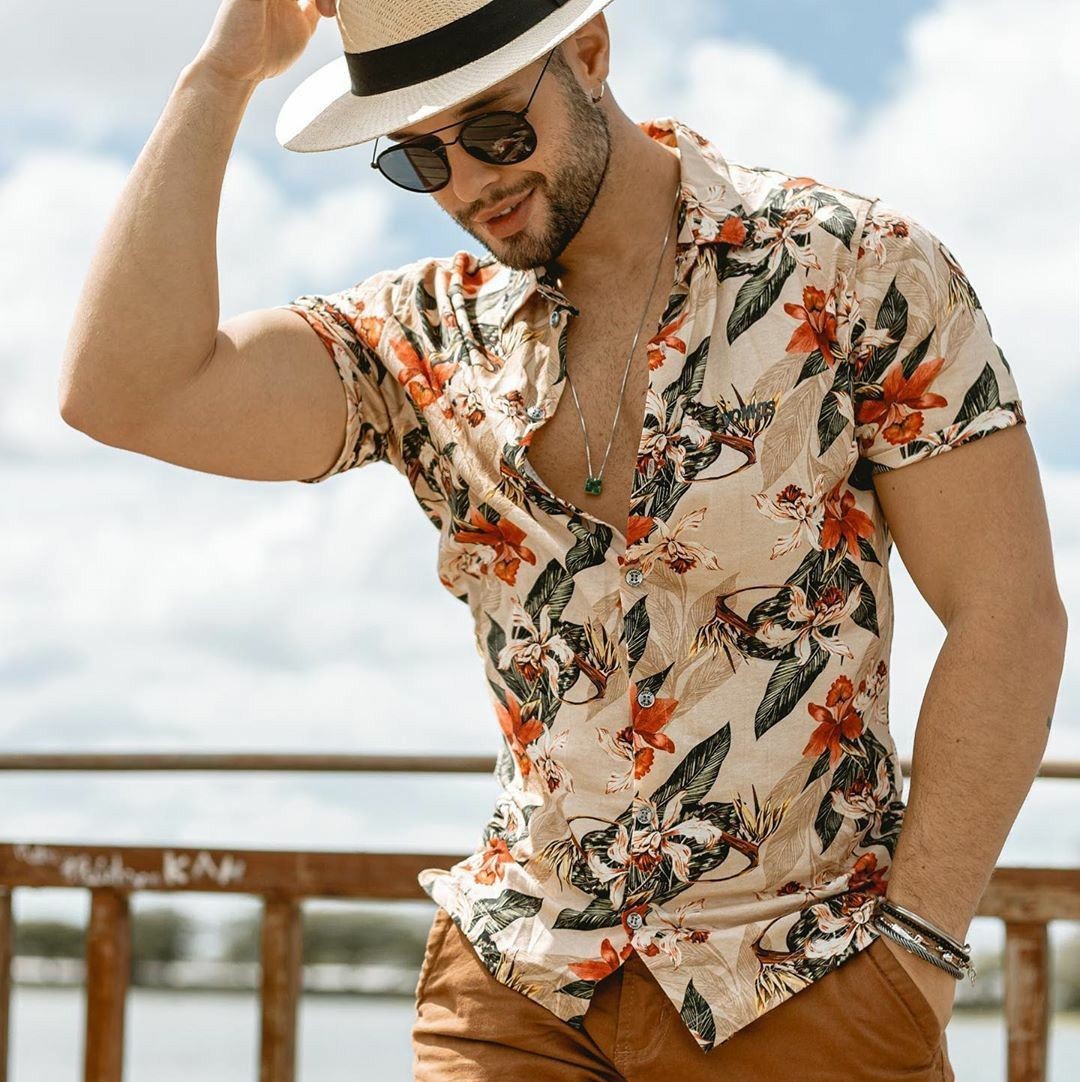
Traditional Goan men's fashion represents the harmonious blend of Eastern and Western influences. The adoption of Western elements during Portuguese rule was balanced with the retention of certain Indian traditions, creating a unique sartorial identity that distinguishes Goans from other Indian communities.
Goan women's traditional attire is a beautiful amalgamation of Portuguese elegance and Indian vibrancy. The clothing reflects both practicality for the coastal climate and aesthetic considerations influenced by centuries of cultural exchange.
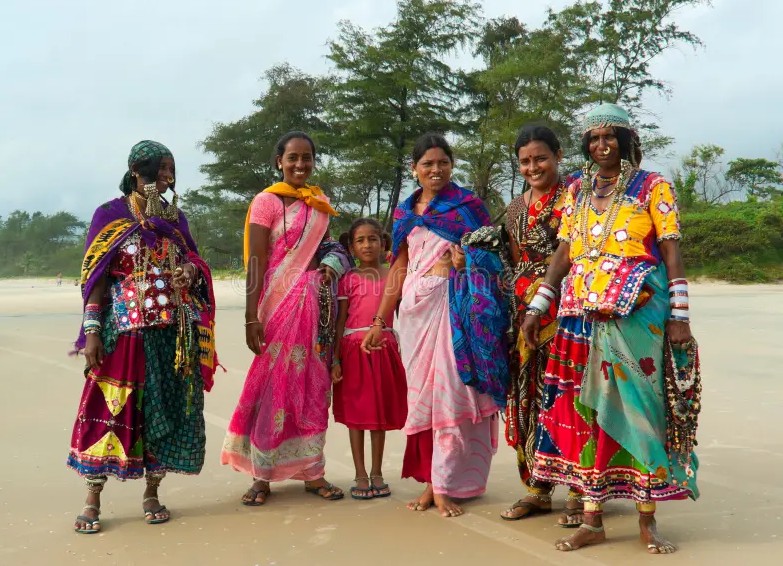
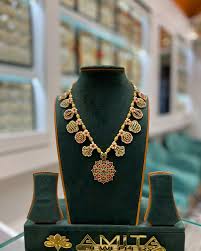

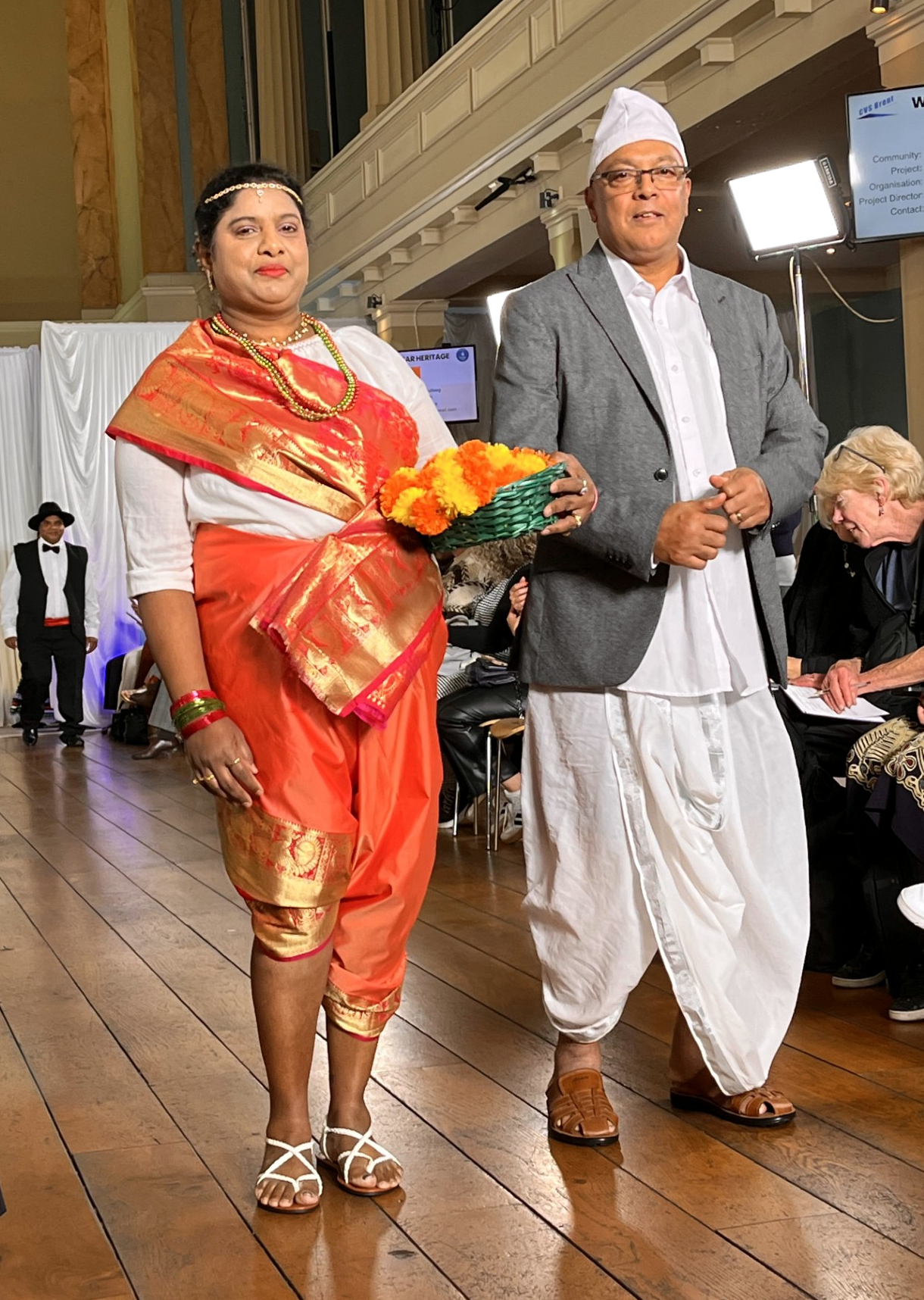
Women's fashion in Goa tells a story of cultural adaptation and preservation. The distinct styles between different religious communities showcase how global influences were integrated while maintaining unique identities. The practicality of the clothing reflects Goa's agricultural and coastal economy, while the decorative elements celebrate its festive spirit.
Goan textiles reflect the state's tropical climate, cultural diversity, and historical trade connections. The fabrics used in traditional clothing prioritize comfort, breathability, and suitability for the humid coastal environment.
The textile traditions of Goa have evolved significantly over centuries. Pre-Portuguese era textiles were primarily simple cottons with minimal decoration. During Portuguese rule, European fabrics and techniques were introduced, leading to a fusion style that incorporated lace, silk, and more elaborate designs. Post-liberation, there has been a revival of traditional techniques alongside increased experimentation with contemporary materials.
Contemporary Goan fashion represents a dynamic blend of traditional elements with global influences, heavily shaped by tourism, Bollywood, and the state's cosmopolitan culture. The modern Goan wardrobe seamlessly transitions from beachwear to traditional attire for festivals.
Traditional Konkani clothing dominated, with simple cotton garments suited for the tropical climate.
Portuguese influence introduced European fabrics, cuts, and accessories, creating a unique Indo-Portuguese fusion style.
Post-liberation period saw a blend of traditional Goan, mainstream Indian, and Western fashions as Goa integrated with India.
Globalization and tourism accelerate fashion evolution, with Goan designers gaining recognition for fusion styles that honor tradition while embracing modernity.
Goa has produced several fashion designers who have gained national and international recognition for their work that often incorporates Goan cultural elements.
Goan fashion is a dynamic and evolving expression of the state's unique cultural identity. Rooted in practical considerations for the tropical climate and shaped by centuries of cultural exchange, it represents a harmonious blend of Indian and Portuguese influences. From the traditional Pano Bhaju to contemporary fusion wear, Goan clothing tells a story of adaptation, creativity, and pride in cultural heritage.
As Goa continues to navigate the intersection of tradition and modernity, its fashion scene remains a vibrant reflection of this balance. The growing recognition of Goan designers on national and international platforms suggests an exciting future where traditional Goan elements will continue to influence broader fashion trends while adapting to contemporary sensibilities.
Future Trends: The next decade will likely see increased emphasis on sustainable practices, technological integration in textile production, and further innovation in fusion wear that respects traditional craftsmanship while embracing global fashion currents.